
Please, support PV!
It allows to keep PV going, with more focus towards AI, but keeping be one of the few truly independent places.
It allows to keep PV going, with more focus towards AI, but keeping be one of the few truly independent places.
Filmmode Settings Tests: detail handling, color shift, exposure, etc.
-
There's been a lot of discussion about which film mode setting is "best." Usually these discussions are a mix of personal opinion coupled with claims about what setting appears to the perceiver to have more dynamic range. I want to discuss the differences between film modes in a more objective way.
So here's one thread to start that. If you look at the pictures attached, there are four blown up frame grabs (from video, not still). They are: Standard, Cinema, Nostalgic, and Smooth. These all have the same white balance setting, shot with same lens, aperature, shutter speed, and lighting (a practical floor lamp). The picture profile settings are at 0 for everything except sharpening which is -2. This is pre-hack.
There are few noticeable things.
One thing in particular stood out to me, which I don't think people talk about. Look at how highlight and midtone *DETAIL* is handled on mode.
1. Cinema captures more highlight detail than the other settings--the wall on cinema has detail that was actually there, whereas in the other modes there are patches of white mixed with wall detail. These patches aren't blown out highlights!
2. At the same time Cinema captures midtone detail pretty poorly relative to the others. To see this, on the phone jack panel to the left of the phone jack. There are smears there in nostalgic especially that were present, but that cinema doesn't capture.
3. Nostaligic also has a pretty bad color shit to yellow (with a touch of shift to red) as you can confirm by a waveform.
4. Finally, it's worth noting that to achieve comparable exposures in each profile, one might need to allow for a bit more light in cinema and a bit less light in nostalgic.
Thoughts?
I've also been curious about what @cbrandin has been up to with his film mode research (or whether that's petered out).
EDIT: color shit = color shift :p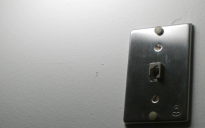
 standard_01.png1920 x 1200 - 1M
standard_01.png1920 x 1200 - 1M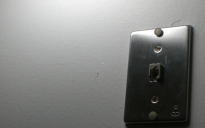
 cinema_01.png1920 x 1200 - 2M
cinema_01.png1920 x 1200 - 2M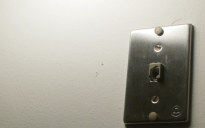
 nostalgic_01.png1920 x 1200 - 2M
nostalgic_01.png1920 x 1200 - 2M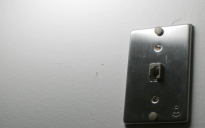
 smooth_01.png1920 x 1200 - 1M
smooth_01.png1920 x 1200 - 1M -
'colour shit to yellow'?! Seriously though, don't really like any of them and I know that Chris is working on (hopefully) better settings.
-
Yes, hopefully. But I'm a little confused by your color shift to yellow in scare quotes. :-)
-
I hope that we can do better then the fim modes that we currently have. I can do decent stuff with cinema but I would love more shadow detail, with the new high data rates I can do so much more in post.
-
the dpreview gh2 review already has a page on this with all the modes measured properly
-
@sb1 The only thing on dpreview on filmmodes is about dynamic range (there's also one little page with different pictures of each mode). But dynamic range isn't the only way that a filmmode affects the processing of the image (not to mention that their tests were done for stills). For example, the point I made in my original post about how each mode handles details.
-
We've had some luck with getting a Nostalgic to look more neutral with +4Blue and +3green.
Our best results though usually come from smooths and standard (and glad you included standard in this test!). -
Here is a test I did with Cinema mode:
-
from the testing i have done the tone curve is applied the same in jpg as in avchd so i think the dpreview results are valid for video. you are of course free to confirm this for yourself. i think any difference in details is only to do with how that part of the image is affected by the tone curve. to take your example, the highlights have more detail in cinema because the cinema tone curve preserves highlights, at the expense of crushing shadows, which you can see in the dpreview film mode graphs compared to other modes. for middle grey, nostalgic is about 1/3 stop overexposed, and cinema is about 2/3 underexposed, as compared to smooth and standard. the "one little page with different pictures of each mode" provides all this information. you are of course free to do all the testing you like, i'm just saying that if you want "objective", the dpreview info is already there and completely relevant, imho.
-
Nostalgic is not for daylight shooting; it looks great when you want make the most of the warm tones of incandescent light. At 2700K, there's not much blue light to work with anyway, and trying to make it look white just adds chroma noise. Nostalgic puts the nighttime balance where it belongs.
-
@LPowell You're right...I found this to be true also. I hate the results I get in daylight shooting with Nostalgic. But indoors where there is a lot less light and at night time it looks excellent. You're the first person to say what I concluded a while back. I find it a great help in bringing out shadow detail. I basically do what @Cosimo_Bullo mentions a few post back.
-
@bitcrusher :D beautiful images!
@sb1 can you post a link for the dpreview you are talking about please? -
@LPowell The above images were shot at night with a practical. I think that yes, if you want to bring out the warm tones of night time interior in a limited way, that nostalgic is fine. But we don't always want to make everything look like the Godfather. Moreover, this kind of thing would probably be better done in post, no?
@lolo @sb1 is referring to this: http://www.dpreview.com/reviews/panasonicDMCGH2/page12.asp
and this http://www.dpreview.com/reviews/panasonicDMCGH2/page14.asp
I attached some jpegs from that site's review. I hope this isn't a copyright violation, and if it is, Vitaliy please feel free to delete, etc.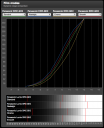
 film_modes_dynamic_range.png720 x 890 - 144K
film_modes_dynamic_range.png720 x 890 - 144K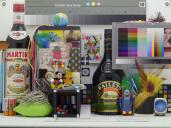
 Picstyle-Standard.jpg4608 x 3456 - 3M
Picstyle-Standard.jpg4608 x 3456 - 3M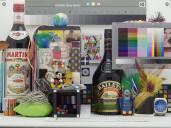
 Picstyle-Smooth.jpg4608 x 3456 - 3M
Picstyle-Smooth.jpg4608 x 3456 - 3M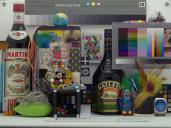
 Picstyle-Cinema.jpg4608 x 3456 - 3M
Picstyle-Cinema.jpg4608 x 3456 - 3M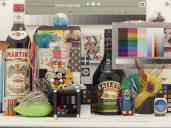
 Picstyle-Nostalgic.jpg4608 x 3456 - 3M
Picstyle-Nostalgic.jpg4608 x 3456 - 3M -
@querty - "Moreover, this kind of thing would probably be better done in post, no?"
Not in this case. If the ambient light you're shooting with is primarily reddish yellow, any attempt to balance it closer to white will reduce the camera's signal-to-noise ratio. And if a warm tone is what you're looking to produce, it's better to get as close as you can to that balance in-camera, in order to minimize the amount of color grading you'll need to do in post.
The question I have is what was the color temperature of the practical you used to illuminate your test shots? -
It was one 60W GE Reveal Bulb in a plastic floor lamp fixture (the light was just outside the frame). A lot web sources say such bulbs are 2850K.
An alternative to using nostaligic in the situations you speak of would be to manually set the white balance by degrees Kelvin in standard, smooth, or cinema mode. -
3. Nostaligic also has a pretty bad color shit to yellow :-)
-
shit = shift which in a lot of cases makes it kinda of shitty :p
-
LOL!!!
-
@LPowell Do you think Nostalgic would be appropriate for Daylight if you adjusted the color temperature higher? Say to 5800-6000K?
-
@DouglasHorn
For daylight, I just use Smooth and more often than not, "sunlight" white balance. I pre-process most footage to normalize exposure and color balance, and I'd rather start with known camera settings than a variety of white balance settings. For nighttime incandescent shooting, I always use Nostalgic @ 2700K with M-4. -
I'm looking for testing methods. For Dynamic range, could we set up some type of bright light that fades to black over a few seconds. Very repeatable. Record the fade. The length of frames that have information in them = the dynamic range. A lower dynamic range setting would have fewer frames with detail. A longer length of frames would mean more dynamic range was captured. Any thoughts?
-
For dynamic range you can just use LED panel and few ND filters on it :-)
-
I have tested the GH2 (next to some of the big boys and girls) with the new Xyla 21 from DSC Labs, see: http://dsclabs.com/Xyla.htm
Sorry, folks, 9.5 stops DR, whatever we did to the settings, fully in line with the Dpreview results. As long as we don't find a way to make the iDynamic more controllable, that's what we have to live with. -
@Vitaliy_Kiselev Out of curiousity, do you know if Chris is making any headway in his film modes research, and whether there are things people could do to help him?
-
@qwerty123
Both Chris and I did many things to get progress in film mode research.
But results are not very optimistic today.
We want to try other approach to same task, we'll see how it work. -
@nomad could you tell us what was the result from the others you tested against the gh2. I have seen a lot of test that showed different result using different methods or charts. If you refer to Dpreview system most if not all the dslr score in the 7 to 10 stops in the jpeg dynamic range test (I think it is the jpeg the we are talking here as it is more related to the video side). While on other test from provideocoalition or the zacuto test, cameras like the 5d are showing more like 10.5 to 11.2 stops.
In the end I am a little confuse about that because it is difficult to get a good idea how the gh2 stack against the other cameras. For me dynamic range is as important as DOF for the film look and even more important than sharpness in that regard. We know that the gh2 is better than all the DSLR and many camcorders in terms of sharpness, what we don't know is in terms of Dynamic range. The hack itself has improved the DR, because now we have shadow detail which is not being smeared by compression. You can better expose for the highlight because you will be able to boost the mid-tones and shadows in post to a certain level, which was not possible before as it would immediately show macro-block in the shadows.
Now an idynamic mode hack would be very interesting. If the processing is done before compression on the raw data, then we would get very close to the sensor full dynamic range. What I found interesting in the threat on idynamic is that the gradients on the wall with the cat was much better. I hope that @Vitaliy tries to hack it, so that we can get an always on version. It would surely alleviate a bit, the need for a flat cinestyle/slog camera film mode.
Start New Topic


Howdy, Stranger!
It looks like you're new here. If you want to get involved, click one of these buttons!
Categories
- Topics List23,997
- Blog5,725
- General and News1,359
- Hacks and Patches1,153
- ↳ Top Settings33
- ↳ Beginners256
- ↳ Archives402
- ↳ Hacks News and Development56
- Cameras2,367
- ↳ Panasonic995
- ↳ Canon118
- ↳ Sony156
- ↳ Nikon96
- ↳ Pentax and Samsung70
- ↳ Olympus and Fujifilm101
- ↳ Compacts and Camcorders300
- ↳ Smartphones for video97
- ↳ Pro Video Cameras191
- ↳ BlackMagic and other raw cameras116
- Skill1,960
- ↳ Business and distribution66
- ↳ Preparation, scripts and legal38
- ↳ Art149
- ↳ Import, Convert, Exporting291
- ↳ Editors191
- ↳ Effects and stunts115
- ↳ Color grading197
- ↳ Sound and Music280
- ↳ Lighting96
- ↳ Software and storage tips266
- Gear5,420
- ↳ Filters, Adapters, Matte boxes344
- ↳ Lenses1,582
- ↳ Follow focus and gears93
- ↳ Sound499
- ↳ Lighting gear314
- ↳ Camera movement230
- ↳ Gimbals and copters302
- ↳ Rigs and related stuff273
- ↳ Power solutions83
- ↳ Monitors and viewfinders340
- ↳ Tripods and fluid heads139
- ↳ Storage286
- ↳ Computers and studio gear560
- ↳ VR and 3D248
- Showcase1,859
- Marketplace2,834
- Offtopic1,320









